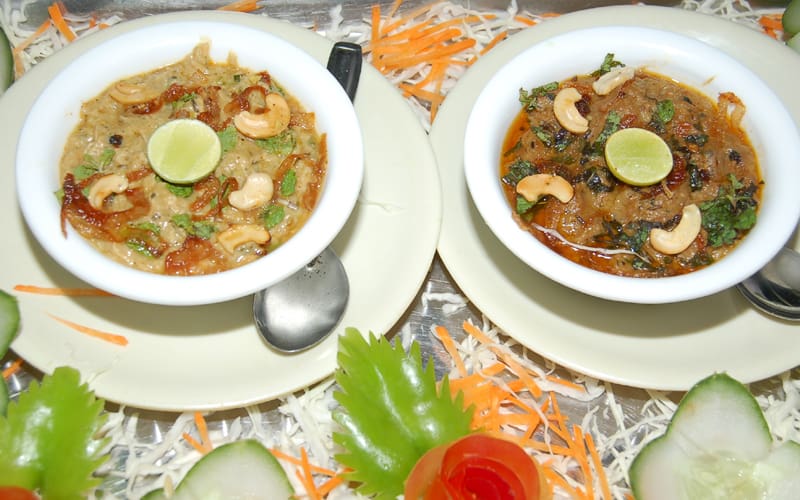With Hyderabad making it to UNESCO network of creative cities under the gastronomy category, the focus is on what makes the gastronomical culture of this historic city so unique.
Hyderabad and Mumbai were the only two Indian cities among 66 cities selected globally by UNESCO for 246-member strong UNESCO Creative City Network (UCCN). Mumbai was picked under the films category.
From crunchy cookies like ”Luqmi” to Irani chai, from luscious kebabs to mouthwatering Biryani and from piping-hot Haleem to spicy ”Nihari paya” and simple yet delicious home-made dishes, there is everything on Hyderabad platter to sooth the palate of food lovers.

Some delicacies are available round the year, others only during special seasons like festivals. Many delicacies are on the menu of restaurants but some authentic recipes are to be relished only at weddings. There are many others with their unique flavours made only at homes.
The mere range of gastronomical delights in this over four centuries-old city with a rich culture, distinct past and cosmopolitan character is mindboggling.
During Qutb Shahi and Asif Jahi (Nizam) dynasties, Hyderabad attracted people from various parts of the world including the Middle East, Africa, Turkey, and Iran, who had far-reaching impact on the local culture.
“Recipes have been historically brought from all over the globe, particularly the Middle East and Central Asia and over time, have blended with local flavours resulting in universally acclaimed dishes such as ”Harees” and ”Biryani”,” according to the dossier submitted by Greater Hyderabad Municipal Corporation (GHMC) to UNESCO, claiming a place in UCCN.
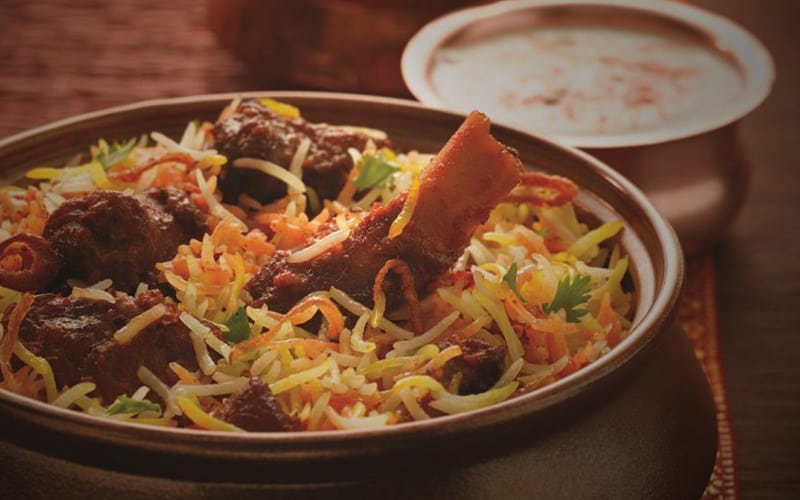
“These historical associations along with the spices of the Deccan geography have led the way for this exceptional gastronomical culture of the city. Modern cuisine as is enjoyed today was perfected in the royal kitchens, and at the same time has a very strong subaltern story. Adaptation to the local context is the strength of the city’s cuisine evolving dishes such as ”Kalyani Biryani”; the affordable form of Royal Biryani cooked in beef,” it added.
“We are happy that Hyderabad received this great honor. The city with its unique culture and cuisine deserved this,” M. A. Majeed, owner of Pista House, told IANS.
Majeed recalled that Pista House secured Geographical Indication (GI) status for ”Harees” in 2010. “This is the only non-vegetarian dish in India to get GI,” he said.

Available during the Muslim holy month of Ramadan, Harees, a stew of meat, lentils, and wheat mixed with spices, is preferred for breaking the fast due to its energizing nature, high nutritional value and soothing porridge-like texture.
While ”Biryani” and ”Harees” are signature dishes of the city, there are many other sumptuous delicacies that are part of Hyderabad’s culinary heritage.
Many popular food joints serve ”Nihari”. Also called ”Paya nihari”, this broth made with Paya (goat trotter) and spices is preferred for breakfast, especially during winter. It is usually taken with ”naan”, an unleavened bread baked in tandoor. ”Sheermal” is another variant of ”naan” with sweetener added to the flour.
”Hyderabadi marag”, a regular feature of Hyderabadi weddings, is a spicy soup made of tender mutton with bone along with milk, cream, cashews and a variety of spices.
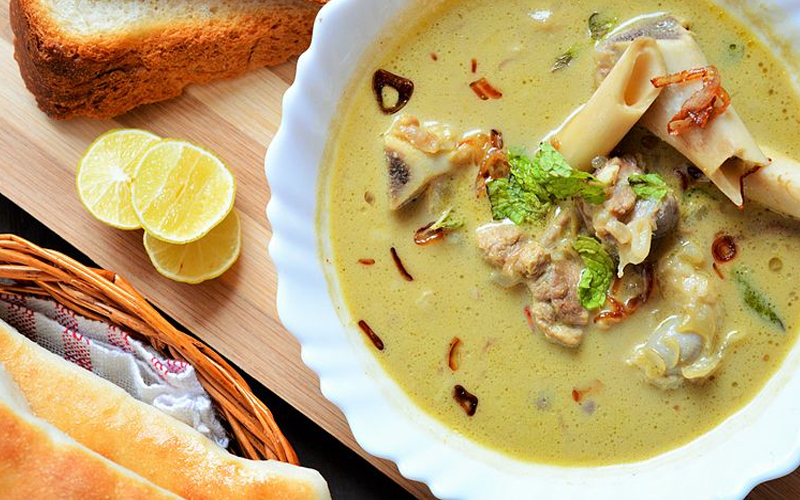
Another popular dish of Hyderabad is ”Patthar ka gosht”, known for its unique method of preparation. It used to be a favorite of Nizams, the rulers of erstwhile Hyderabad State. Marinated boneless meat is cooked on a stone heated by firewood from below.
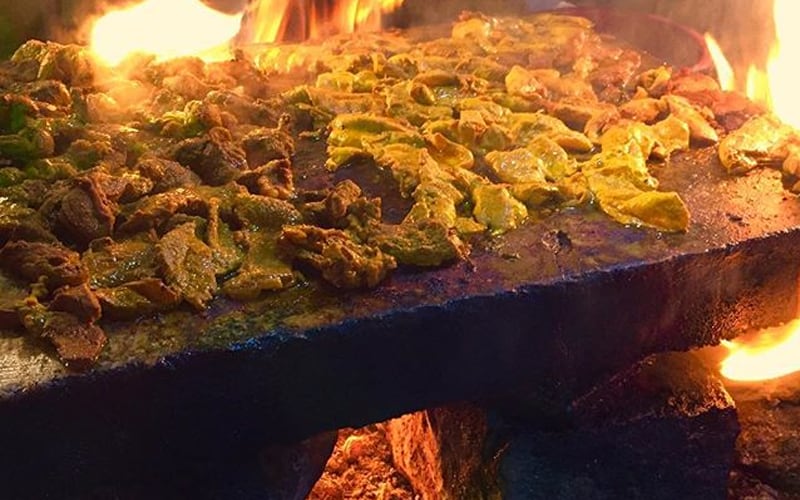
Another royal dish is ”Shiakmpur” or ”Shikampuri kebab”. The kebabs are stuffed with hung yogurt, green chillies, onion etc. Then there are Boti Kebab, mutton cubes marinated in myriad of spices and cooked in aromatic saffron.
”Bagare baigan”, made by deep frying brinjals and adding spices and ”Mirchi ka salan” made of curried green chillies with spices are side dishes with ”Biryani”, which itself will be available in numerous variants.
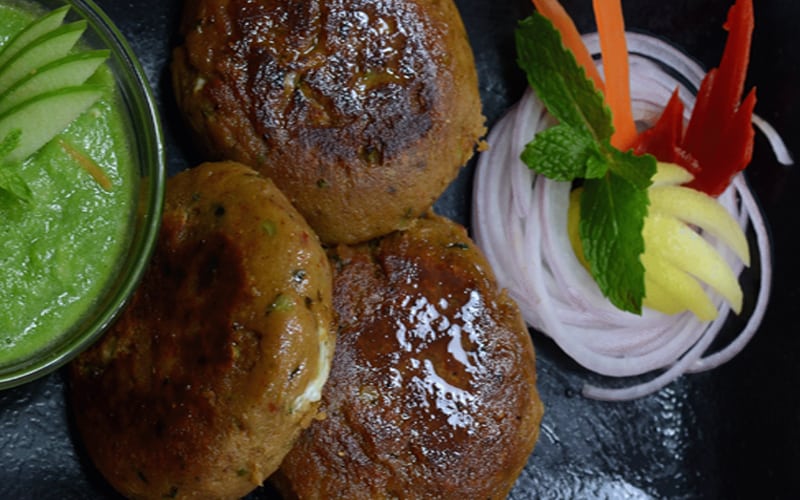
The range of Hyderabadi snacks is equally tantalizing. These include Lukhmi, square in shape with flaky pastry exterior made of maida and stuffed with spiced minced meat.
Osmania biscuits, a soft tea biscuit with a unique taste, it is part of daily life in Hyderabad. “This is the fastest moving item on the shelf as people simply love its taste,” said Syed Irfan of Subhan Bakery, a 70-year-old bakery.

Another famous cookie of Hyderabad is Dum-Ke-Roat. Usually available during Muharram, this hottest confectionery is made of wheat flour, sooji, vegetable oils, sugar, honey, clarified butter and decked with dry fruits.

Hyderabad got global recognition not just for its sumptuous food but for the fact that food culture is connected to lifestyle and livelihood of people.
“Gastronomy acts as a catalyst by providing direct and indirect livelihood to about 12% of city”s working population and further creating strong cohesive networks between people from varied religion, region, caste, class and gender,” the GHMC said.
While the city had over 2,200 formal registered restaurants, culinary experts estimate informal market to have about one lakh units. About 1,000 tons of meat is consumed every day in the city.
Restaurants in the city date back to about three-four generations and have a rich tradition of oral histories enabling life-long learnings for chefs. The catering business is one such illustration, particularly run by traditional families, translating knowledge in the most organic format, say the officials.
They expect UCCN”s membership to provide access to ideas, knowledge and technology which will help in creating sustainable physical and social infrastructure.

